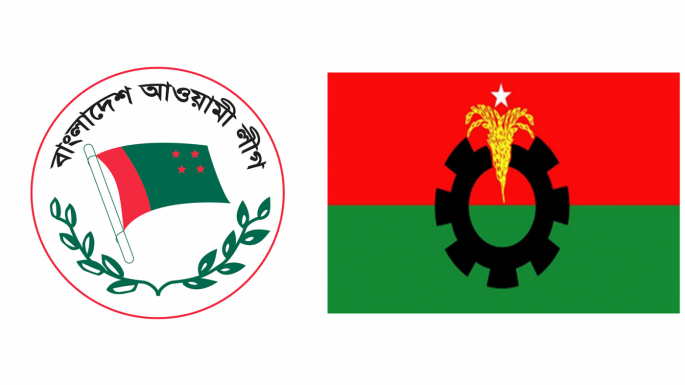
I wrote an article supporting the view that fascism was rooted in the DNA of the Awami League (AL). Noting political developments since then, I have decided to write this article raising the question of whether the Bangladesh Nationalist Party (BNP) is any different from AL. I raised this question because I found the same virus in the BNP. I used to consider the BNP a rational political institution because of its founder and former president Ziaur Rahman’s role in Bangladesh’s history, but a recent Facebook post in London-based Surma News Group regarding the current situation in Sherpur, my hometown, has changed my perception of the party. Let me first relate the Facebook post’s description.
One Hazrat Ali, who claims to be the BNP convener with some connection with its Acting Chairman Tarique Rahman, is claiming himself to be the uncontested ruler of the area. He seems to have established his personal control through some thugs and is already collecting one hundred thousand rupees from every truckload of goods going to India through Sherpur. He is reported to have collected about two million rupees from the director of Sherpur District Diabetic Hospital, but the director recovered the money by appealing to an aunt of the armed forces chief, General Waqaruzzaman. The Facebook post claims many more events of a similar nature to this self-proclaimed BNP district convener.
I have tried to verify the Facebook post’s authenticity independently, and I have come to conclude that the post’s claims are not exaggerated. That is why I am raising the question of whether the BNP is any different from the AL now. As a student of civilizational transformation, I am familiar with how noble ideas are corrupted with the passage of time. Great ideas have given birth to civilizations in history, but as civilizations have progressed, they also have become corrupted. The Enlightenment philosopher Jean-Jacque Rousseau has described the phenomenon, as “All things are good as they leave the hands of their author, but everything degenerates in the hands of man.” As this principle applies to civilizations in general, it also applies to minor phenomena such as political entities and all other social movements. What do we find in the cases of AL and BNP?
Both AL and BNP came into existence based on ideas that had motivated Muslims of Bengal for centuries. Activists of the All India Muslim League, which became the Pakistan Muslim League after 1947, established the Awami Muslim League because of their frustration with the central leadership. Venerated leaders such as Hussain Shahid Suhrawardy and Maulana Bhashani led the movement at the time. The word Muslim was later dropped from Awami Muslim League to accommodate non-Muslims into the organization. However, the party slowly moved toward fascism and was engulfed in corruption. We have already highlighted those developments in our article. Our question now is whether BNP is any different from the path that AL has walked through!
When President Ziaur Rahman established the BNP, he had walked along the same line as Suhrawardy, Bhashani, and other leaders of their times, but his followers seemed to have abandoned his ideas. In this context, one must remember that the current approach of both AL and BNP is related to the primary identity of Bangladesh as a nation – what is the identity that the people of Bangladesh are trying to establish? Why did the students revolt against AL’s fascist rule? Does the sentiment of 2024 differ from ideas that the people in the area have tried to establish in history? What similarities and differences are there in the sentiments of 1905, 1911, 1947, 1971, 1975, and 2024?
What is common in these struggles is their determination to secure their basic rights of human dignity, justice, and equality with all other humans. Mahmudur Rahman of Amardesh, in his book The Political History of Muslim Bengal: An Unfinished Battle of Faith, articulates the formation of this sentiment very well. The Bengali Muslim identity became crystalized through centuries of patronization of the Bengali language by independent sultans of Bengal. However, identity and sentiment suffered heavily during the century-old British East India Company rule (1757-1857). The Company patronized upper-caste Hindus, resulting in the Bengal Renaissance, which had a devastating impact on Bengali Muslims. One needs to comprehend the nature of the Bengal Renaissance to understand different manifestations of Bengali Muslim sentiment in 1905, 1911, 1947, 1971, 1975, and 2024. We hope to address this question later in a different setup, but here, we would like to highlight one aspect that explains the different nature of this sentiment in 1971.
When I raised this question with ChatGPT, it responded by saying that 1971 was a “temporary rupture” in the expression of Bengali Muslim sentiment. Not that I take artificial intelligence telling us the Gospel truth, but I believe it has the ability to monitor millions of sources to tell us about a general tendency in any given development. As a student of world history and civilization, I am aware of how different stakeholders manipulate noble ideas: Ibn Khaldun has made this point more than six centuries and Rousseau has observed this during the European Enlightenment. Let us examine why the ChatGPT categorizes the Bengali Muslim sentiment expressed in 1971 as a temporary rupture.
The main difference in 1971 was India’s participation in Bangladesh’s liberation war. One can easily identify India’s imposed terms and conditions on the newly independent Bangladesh in its 1972 constitution. Within years, a violent response eliminated the leadership. Coups and counter-coups installed Ziaur Rahman as the president of Bangladesh, who established the BNP, reviving the Bengali Muslim sentiment. Therefore, one will find a continuity of the Bengali Muslim sentiment that existed in the formation of the All India Muslim League in 1906, in the formation of the Awami Muslim League in 1949, and BNP in 1978, all originally founded on the Bengali Muslim sentiment. One will notice a slightly different sentiment in the 1971 War of Liberation followed by the 1972 constitution, which the ChatGPT calls temporary rupture. As a student of intellectual history, I find ChatGPT’s identification utilitarian. This identification makes sense because the 2024 student movement also reflects the same sentiment.
How does one ensure that ideas such as the Bengali Muslim sentiment are not corrupted? How does one make sure that fascists or extortionists do not take over institutions and organizations that were once established to promote noble ideas? Interestingly, this is not a unique issue for Bangladesh. As noted earlier highlighted by scholars such as Ibn Khaldun and Rousseau, this is a human problem. Our students have demonstrated their resilience to challenge such a phenomenon. To my understanding, such resilience originates from taqwah – the quality of God’s consciousness to judge one’s actions. The Qur’an constantly reminds its followers to cultivate this quality. Interestingly, one finds similar concepts in other traditions, too, but unfortunately, in Bangladesh, one BNP leader has declared that it is painful to see students demand to abandon the 1972 constitution. What a treachery with the Bengali Muslim sentiment – a sentiment that has motivated the people of the area for centuries! What is the difference between the self-proclaimed BNP leader Hazrat Ali of Sherpur and this BNP leader?
